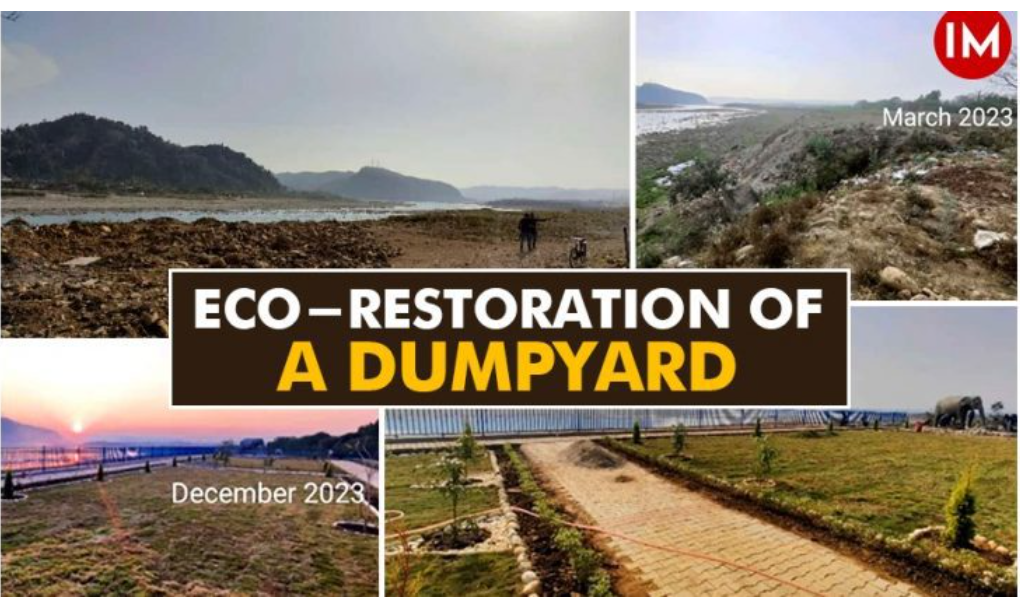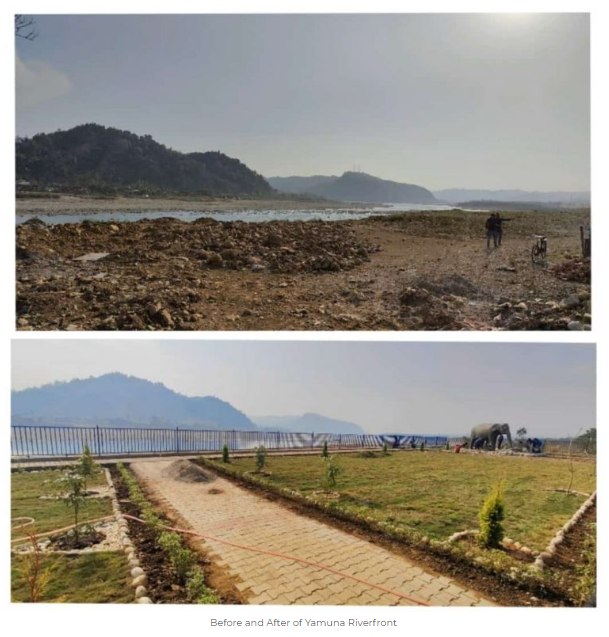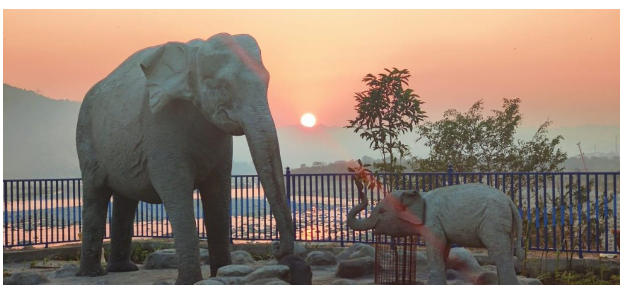Highlights
- Taking the work of his predecessor forward, IFS officer Aishwarya Raj has concluded the work on Yamuna Riverfront
- An open dumping ground in Paonta Sahib has been now converted into a beautiful nature park
- For Mr. Raj, this is not the first but fifth restoration work on a dumping ground

Founded by Sikh Guru Gobind Singh and situated on the banks of Yamuna river, Paonta Sahib is an industrial town in Himachal Pradesh with a rich history. It is dotted with many big industries, including cement and pharmaceutical, which explains the fairly large population in the town. And, due to this, waste management has always been a major issue here.
For a very long time, there used to be a lot of open dumping of the entire town’s non-segregated waste in forest land along the river banks, leading to degradation and foul smell as well as being hazardous for nearby residents. The issue was getting so big that in 2022, the then District Forest Officer Kunal Angrish initiated the conversion of the open dumping zone into a nature park, and with help from the local administration, initiated strict action with fine on open dumping.
When IFS officer Aishwarya Raj joined in Paonta Sahib as DCF, he took the work forward and the concept of a nature park soon turned into a reality. Speaking to Indian Masterminds, Mr. Raj detailed the project and its consequent success.
BUDGET
“It was personally heart-warming and enthusing for me to start working on this project after taking charge of the division in February this year. The work is almost done and we are set to welcome 2024 with the Yamuna Riverfront Nature Park!”, Mr. Raj said.
The work started in February this year but there were hurdles. Many assignments including drafting of the Division’s Working Plan and crucial litigation matters, were pending. After these were sorted, the main thrust of eco-restoration work began from October.

In June, an intensive exercise on waste removal and soil levelling was carried out. “The idea was to create a space that blended forested space (Miyawaki) with open green area for recreation, walking, bird watching, etc. Our team, including field staff of Paonta Range along with forest workers and some nearby conscious locals, put in days and nights together to create a green space for the citizens of Paonta Sahib in the new year 2024,” Mr. Raj said.
The budget provisioning for the Riverfront was made through convergence of schemes like NCAP (through Pollution Control Board), DMFT (through Mining Department), and General Scheme (for nearby riverine plantation). Also, the same is proposed for Nagar Van Yojana in the next phase of expansion of the Riverfront towards Bhuppur area.
GAJ SELFIE POINT AND AROGYA VATIKA
The Riverfront has been developed with various thematic sections, landscape approach with ecological considerations of restoration (use of native species for Miyawaki), and edutainment models for visitors.
A Gaj-Selfie Point, depicting life-size mother and baby Asiatic elephants describing their recent movement in Paonta Sahib from the forests of Uttarakhand, has been constructed. The idea behind this inclusion is to make the visitors aware about the Dos and Don’ts for avoiding human-elephant conflicts.

The local sculptor used the plastic waste and bottles collected from the dumpyard to make the statues. The view captures the sunset perfectly between the mother and the baby, where visitors can pose with Uttarakhand hills in the backdrop.
Apart from this, an Arogya Vatika section with medicinal and ethano-botanical species including Aloe Vera, Kachoor, Buch etc., is also part of the riverfront. It also has a Meditation Point and Victorian lighting, CCTVs for safety monitoring, and theme based landscaping sections of various species including Bamboo, Areca Palm, Cypress, Champa, Ashoka and flowering species.
Enthusiastic bird watchers can take their binoculars and observe the huge variety of avian visitors including migratory ones like Brahminy, Common Teal, Reddy Shelduck, Red-crested Pochard, Pintail, Shoveller, Coot, Cormorant, Egrets, etc., From the Bird Watching Walkway.
STORY OF YAMUNA
Yamuna and Yamuna Water Regime will be shown through 3-D Artwork as well as edutainment boards. It will include the story of Yamuna from the source Yamunotri to its confluence with Ganga in Prayagraj, tracing Paonta Sahib, Delhi, Agra, Mathura in between, along with the flora and fauna and the changes in landscape and forest types. This section shall also depict Yamuna Water Basin along with the challenges of pollution and the abatement strategies from a citizen point of view.
Article Credit: indianmasterminds